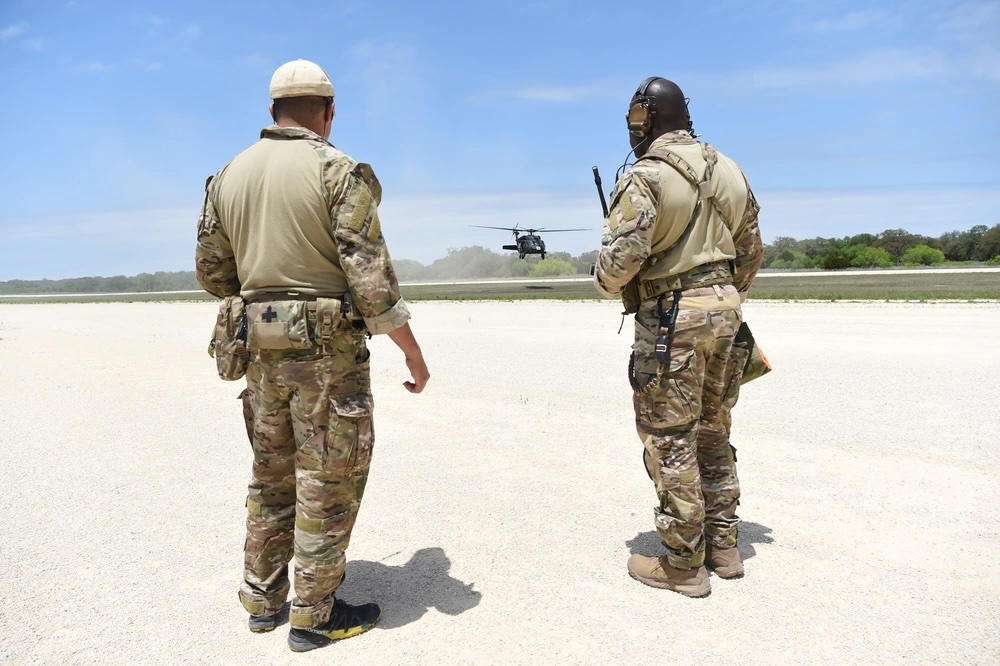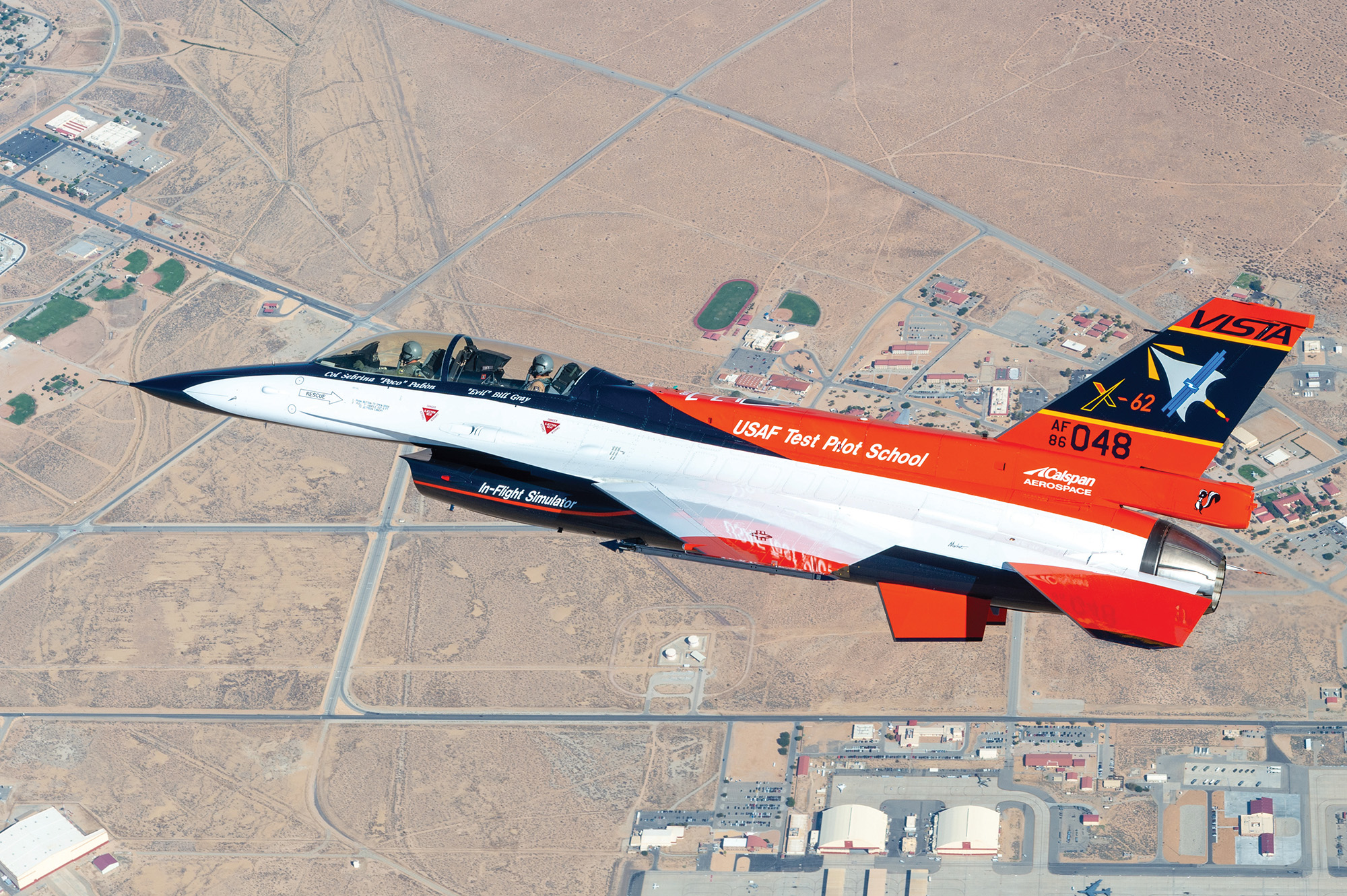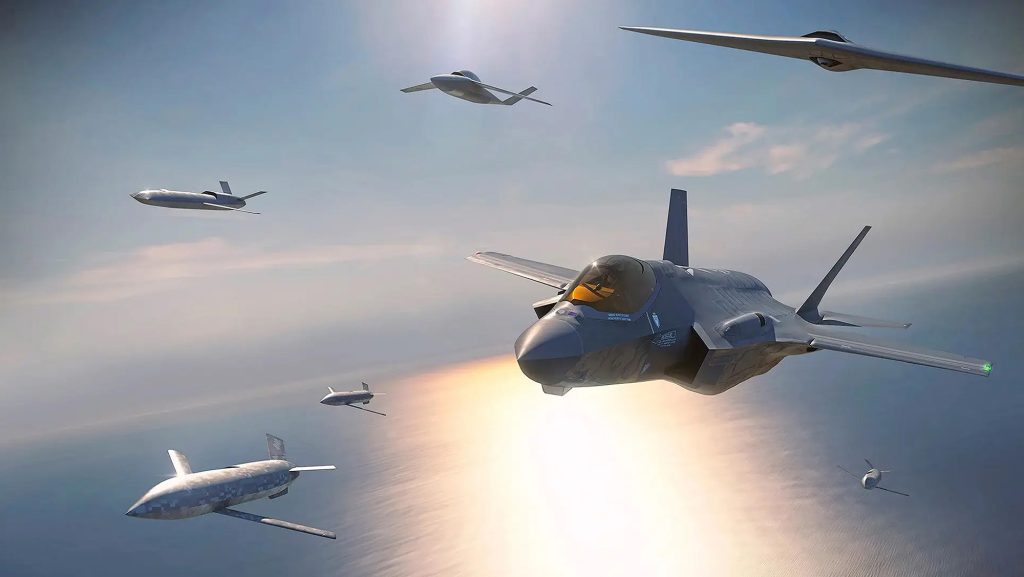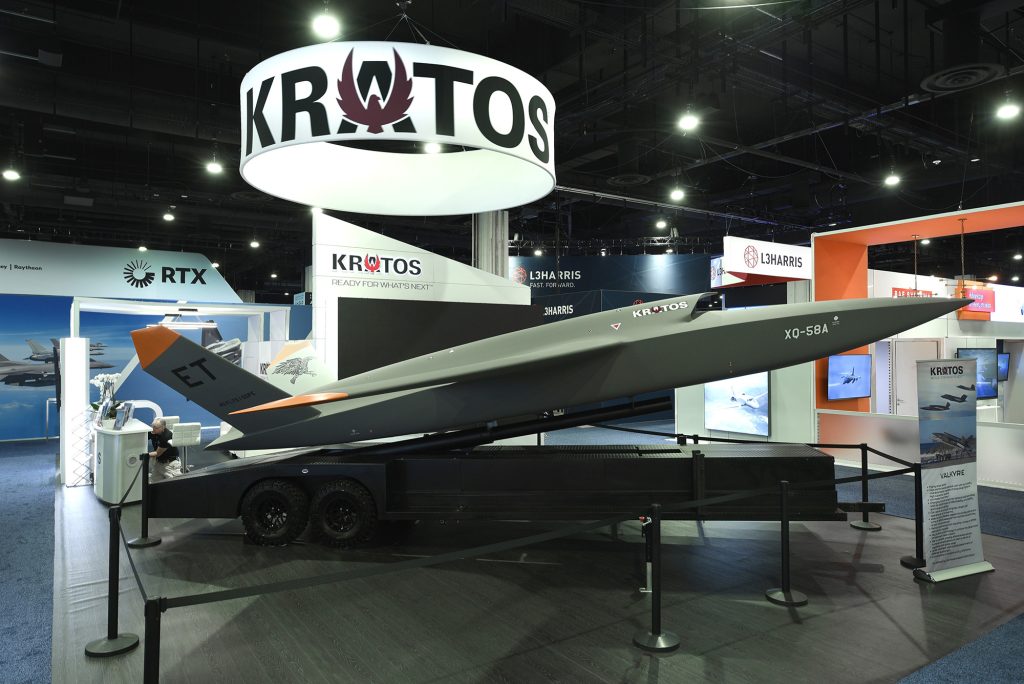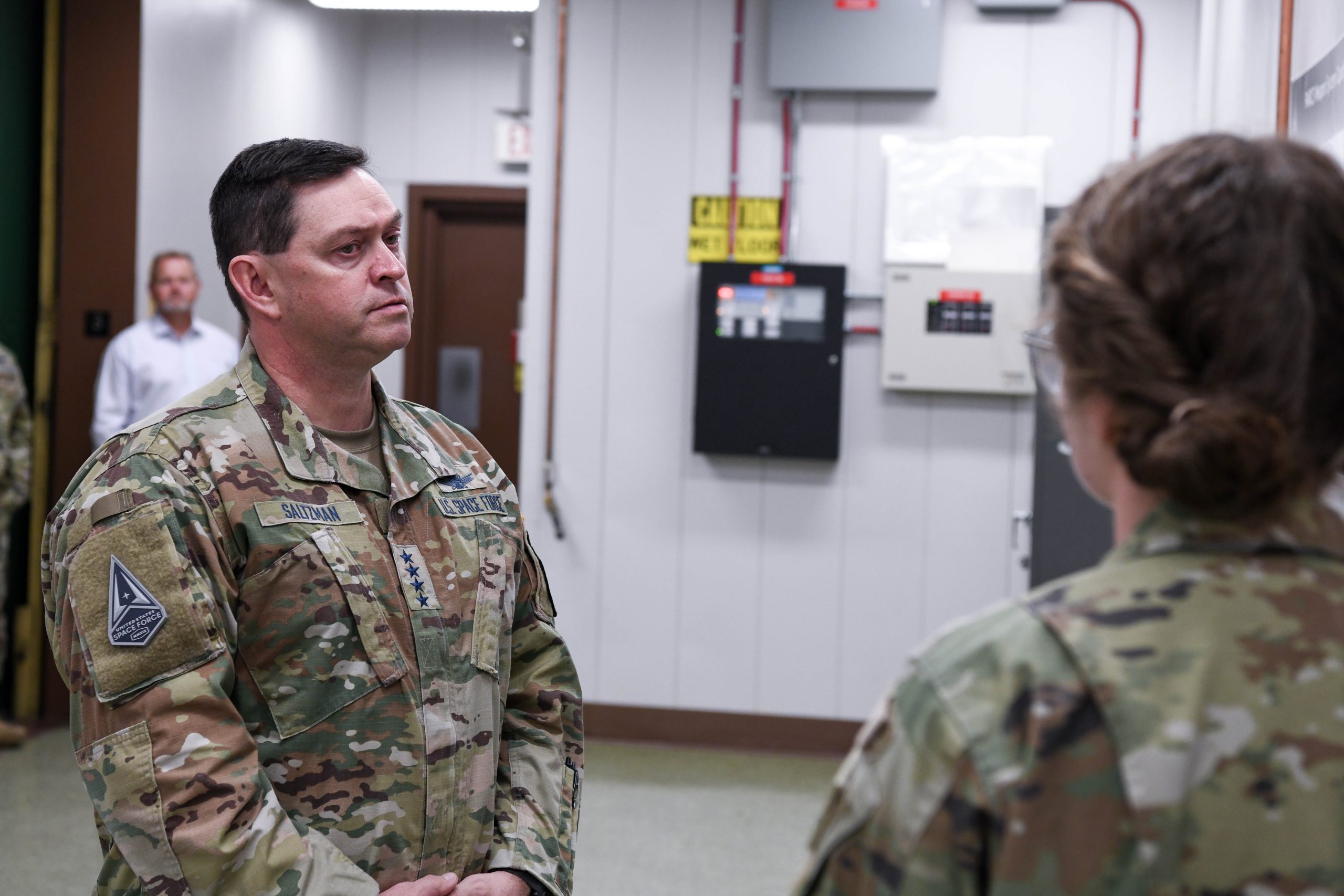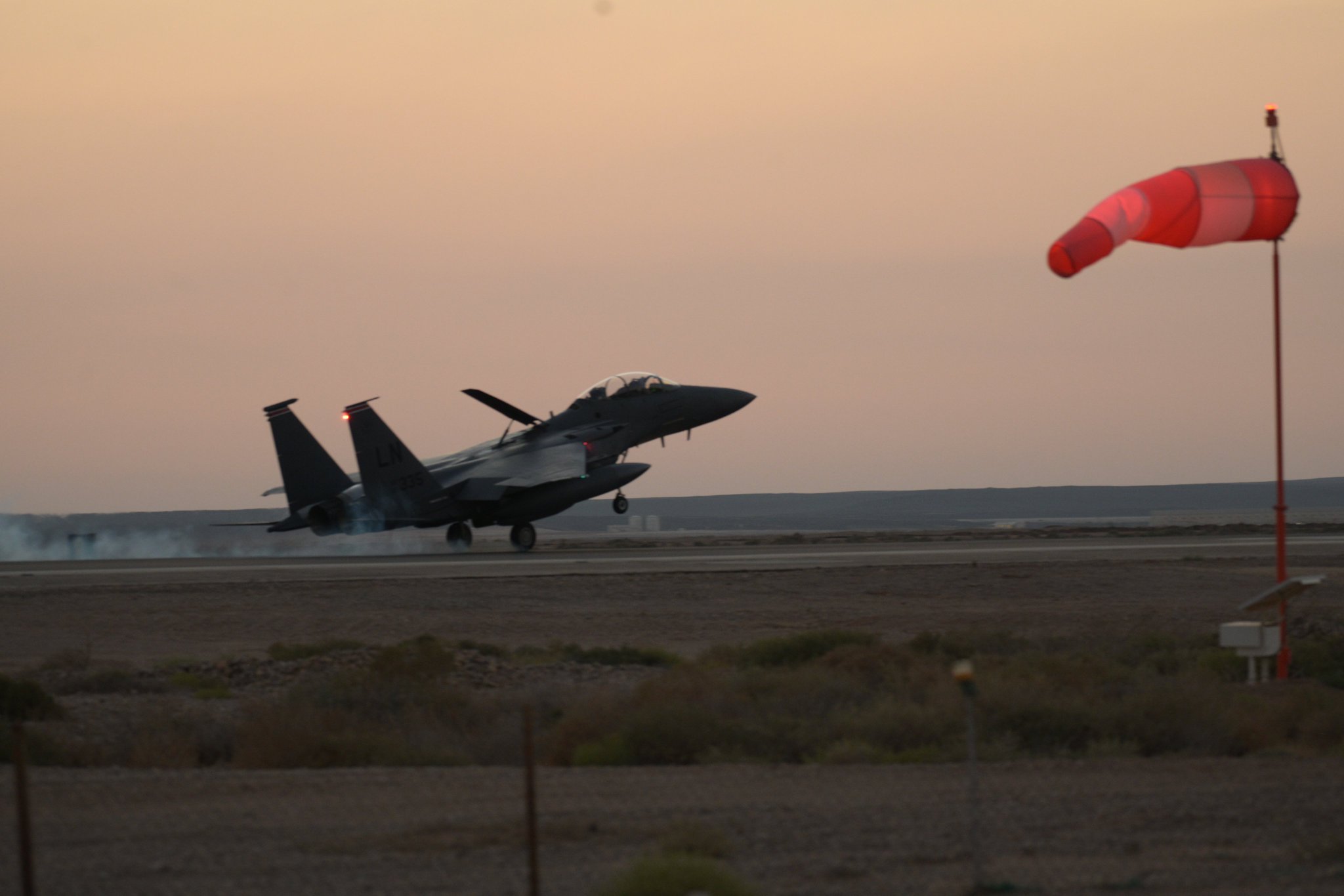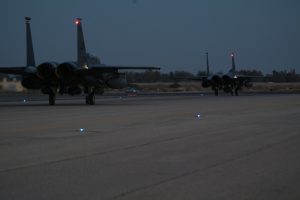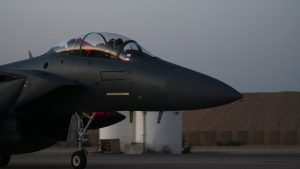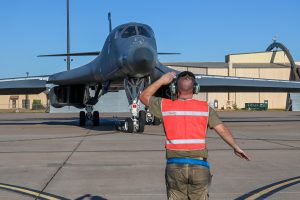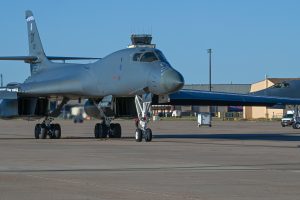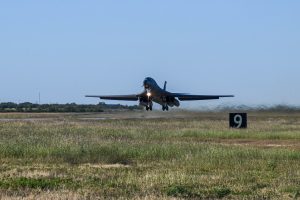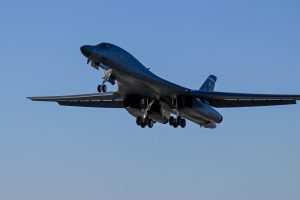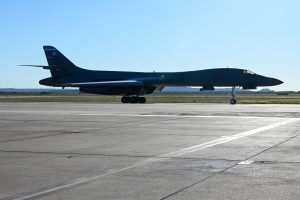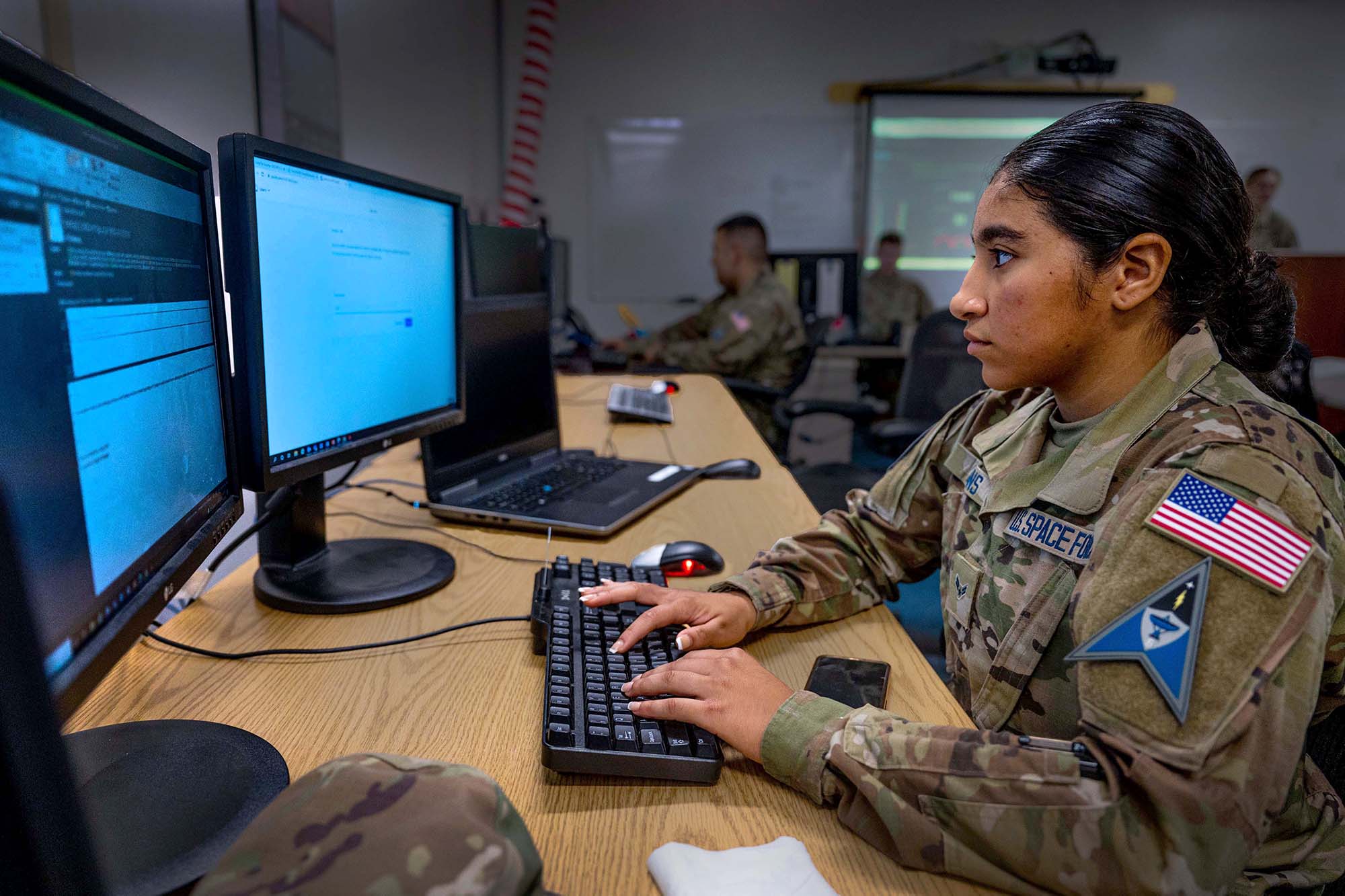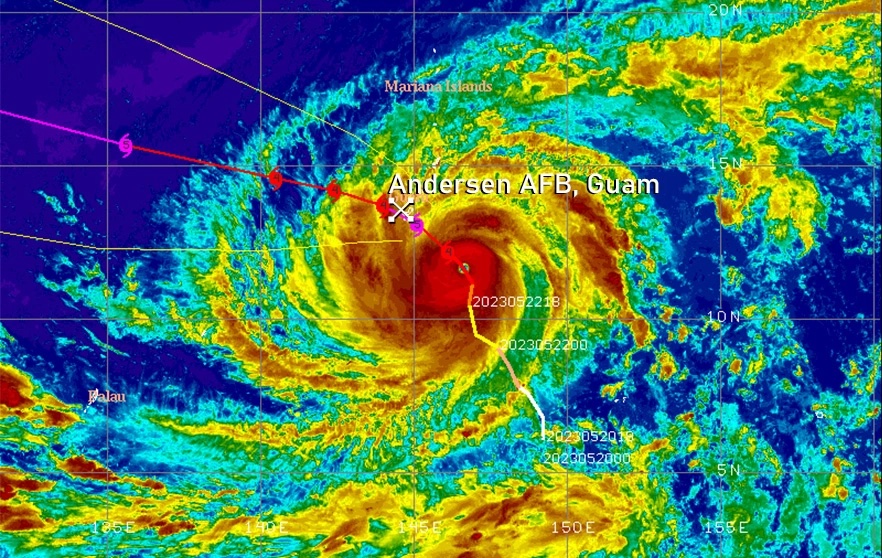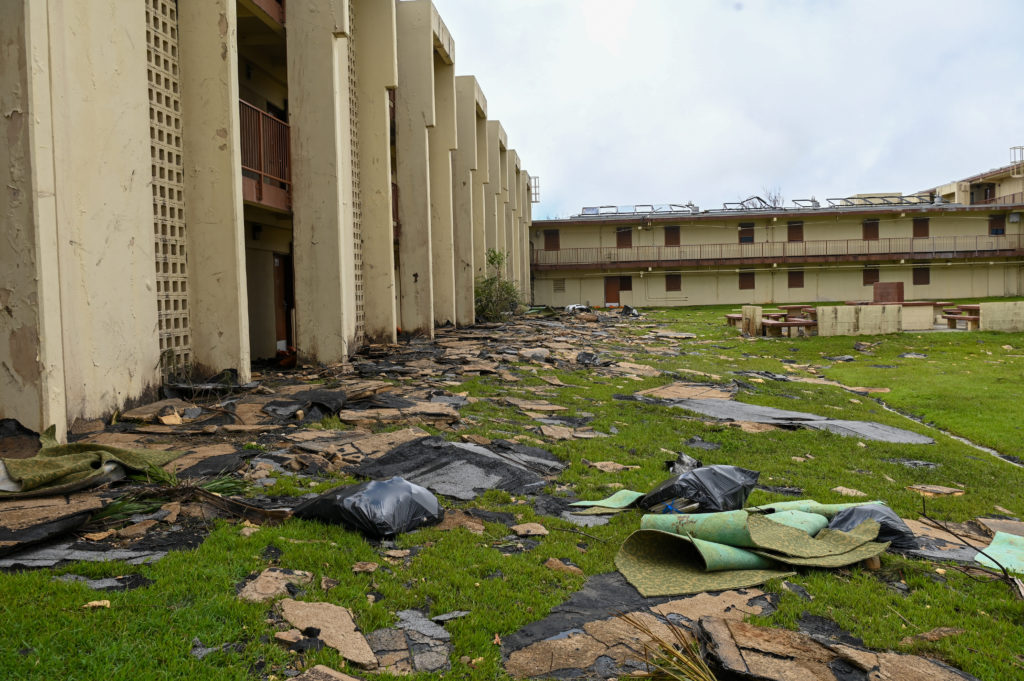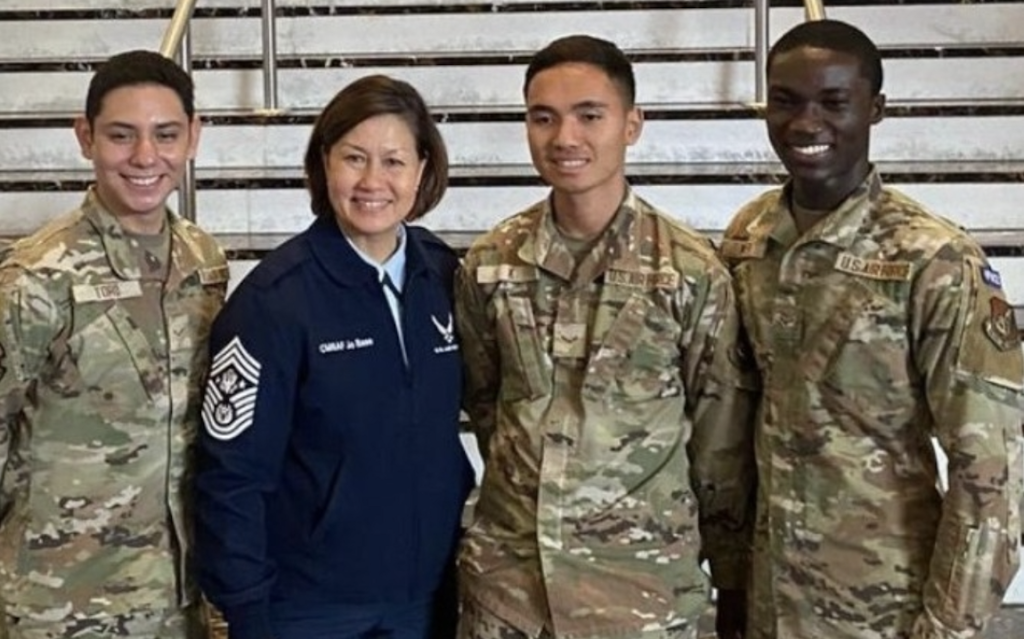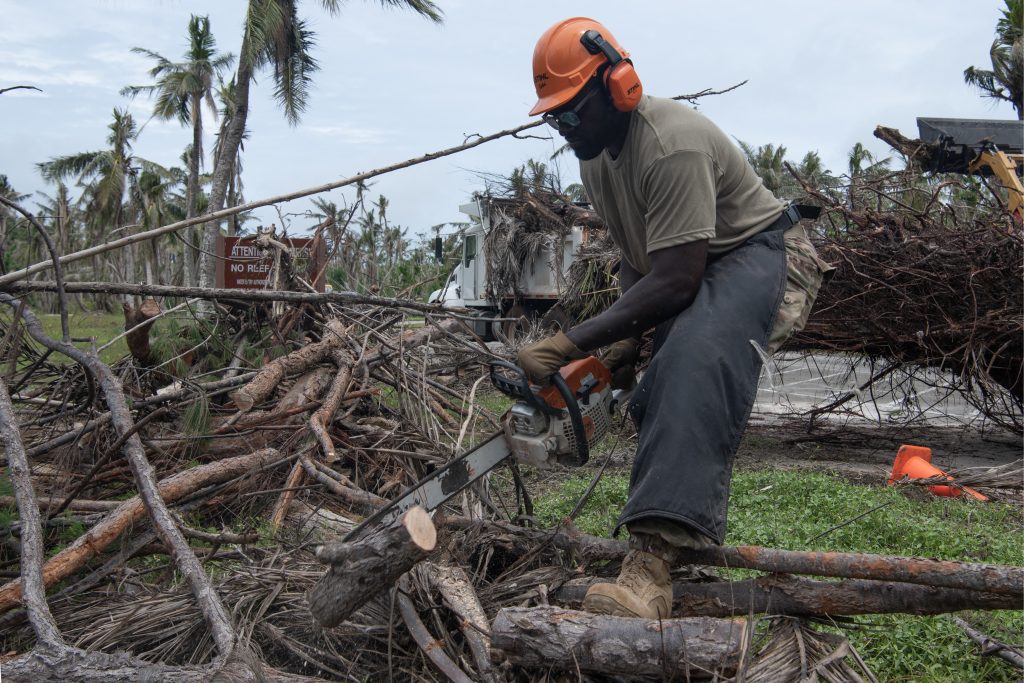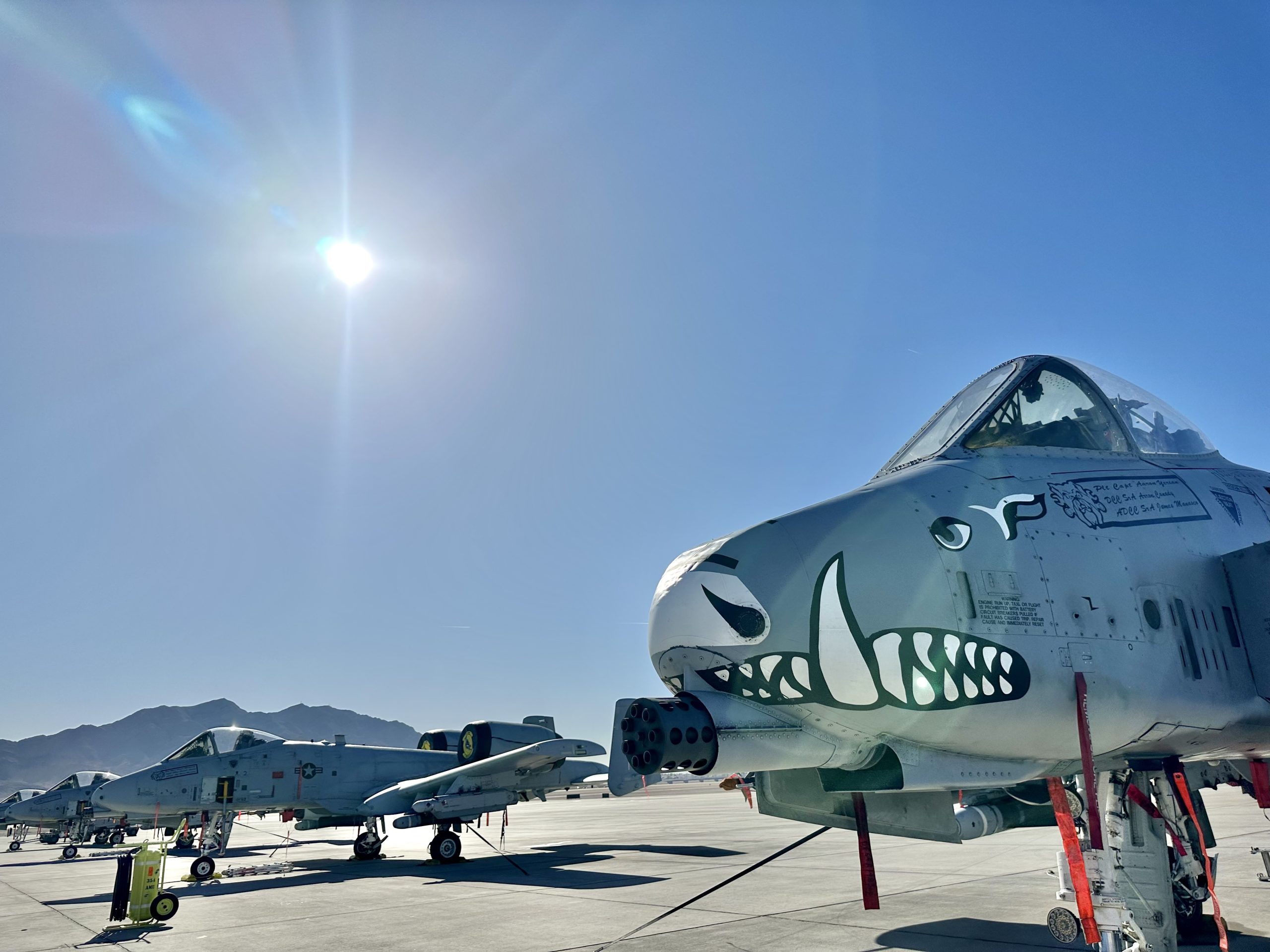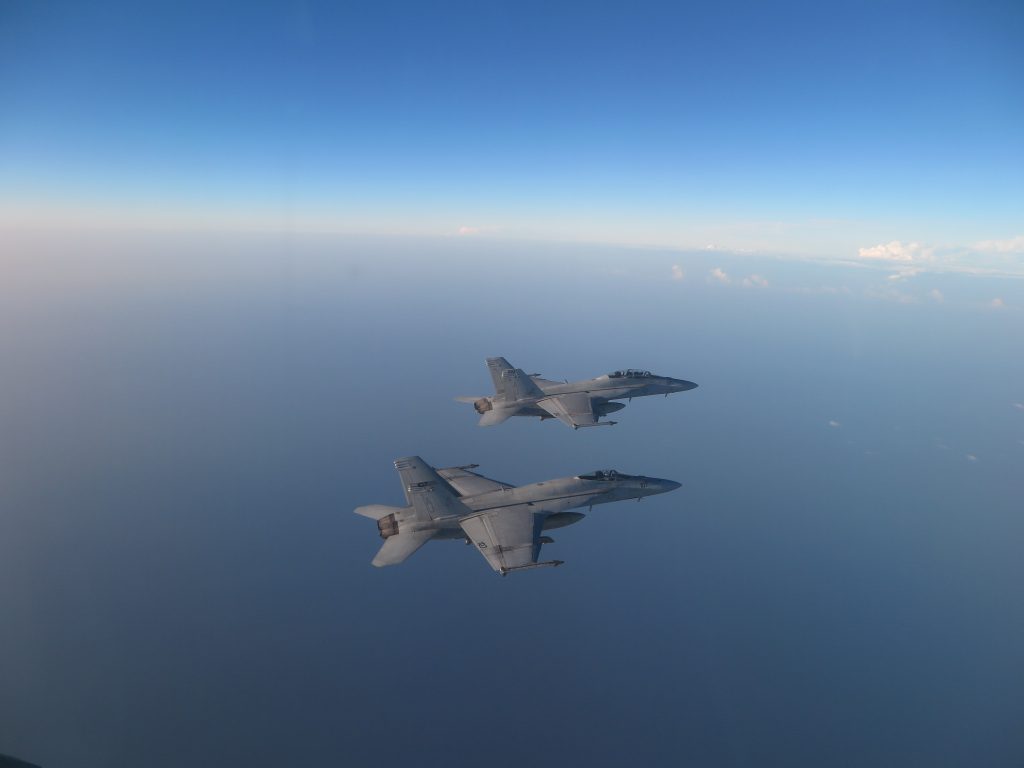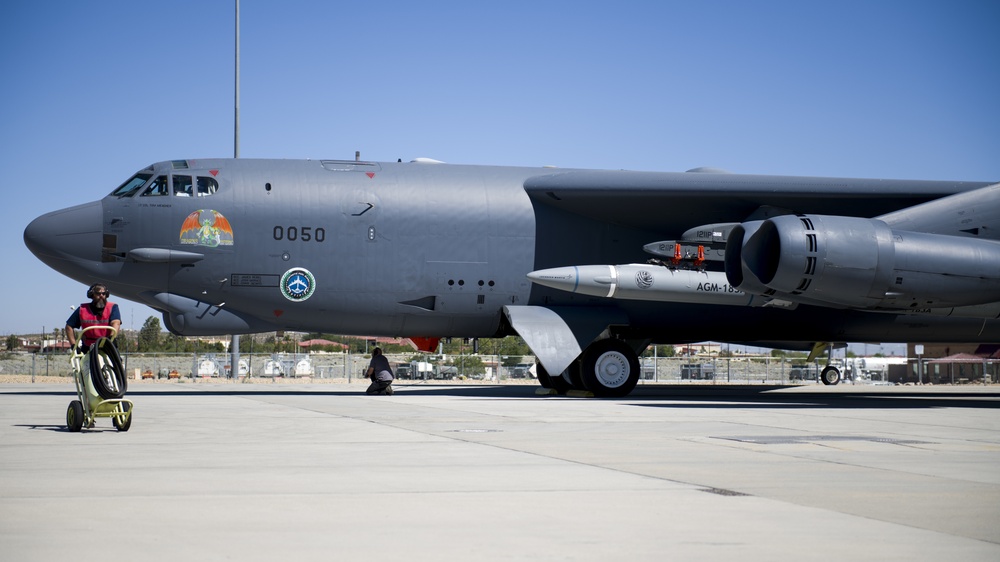Tactical Air Control Party (TACP) Airmen with the Texas Air National Guard’s 147th Air Support Operations Squadron recently teamed up with Texas state agencies in Austin to try out a new technology that should help military and civilian first responders save lives faster in a natural disaster or humanitarian support mission.
Normally when multiple agencies from across the government arrive at an area without cell service, they have to figure out how to communicate across multiple frequencies and types of communications equipment.
“The biggest challenge when it comes to humanitarian assistance or disaster response is communication,” Maj. Kristopher Bartels, a special warfare officer with the 147 ASOS, told Air & Space Forces Magazine. “On a mission, I may carry three different radios and I’m managing multiple nets and multiple people.”
But at the Austin event, the 147 ASOS, the Texas Counterdrug Task Force, Texas Game Warden, Texas Task Force-1, an urban search and rescue unit, and other agencies had a new tool that allowed them to communicate easily without cell service. The goTenna Pro X2 is a radio about the size of a barbecue lighter. When two users each have a Pro X2, they can pair it with an app on their smartphones to exchange texts and location data, even if satellites or cell towers are offline. Since multiple Pro X2s can form a mesh network, they can be daisy-chained to cover tens of thousands of square miles, through mountains or urban terrain that often block traditional radio signals.
At the demonstration, the TACPs and their interagency colleagues practiced the first steps of organizing a disaster response, like setting up communication relays and helicopter landing zones. They stood up the network in just three hours, allowing them to move fast and reduce the risk of accidentally duplicating efforts, such as sending two helicopters to do the same task. Text messaging also reduced the risk of losing something in translation, a common error in voice-to-voice transmissions.
“It’s great if I can key up on a radio and talk to someone, but how many times have we played the telephone game and something’s gotten lost?” Bartels asked.
The responders found they did not need to communicate as often because the Pro X2s doubled as tracking devices that appeared as little blue dots on their smartphone apps. The device works with the Team Awareness Kit, an app used by many service members and government agencies, but it also works with a goTenna app that requires less training to use.
“If I’m working the command-and-control node, now I don’t even have to talk to that guy or gal that’s on the edge,” Bartels said. “I can see their little blue dot and they can shoot me a text message that says ‘Hey, I need a helicopter.’ And they didn’t have to talk to three other people, where something might get lost, to get back to me.”
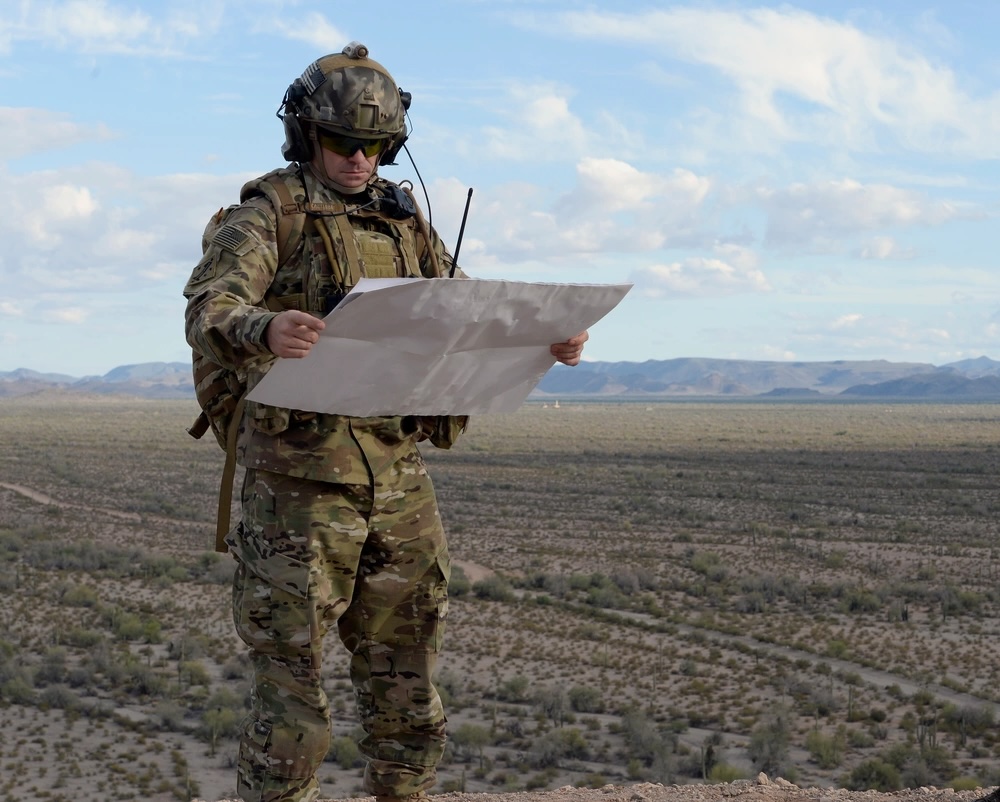
The technology could be helpful in situations where cell service is only partially down, but the surviving network is overloaded. Bartels said it took up to six or eight hours just to receive a text message during the February ice storm in Texas that left more than 250,000 people without electricity across the state.
“If I can roll into an area, give this to six or seven different agencies, and build a network for a really low cost, then I’m not clogging up the cell phone networks or the radio networks,” he said. “I can send out one group message, which allows me to say more with less and free up those critical pathways.”
Each Pro X2 costs $1,200, compared to the $5,000 or $10,000 radios Bartels frequently encounters in his line of work. Unlike some of those devices, the Pro X2 can’t stream video or other higher-end capabilities, but it can get responders on the same page faster and requires little training to use, so Airmen could hand them out to partners at the start of a mission and get going.
The small radios could help address a big challenge in disaster response. An after-action report published by the city of Austin after the Texas ice storm found that “different network infrastructures within some partner agencies challenged the exchange of information.” The Army National Guard also identified disparate communications equipment as a challenge delaying emergency response in events like Hurricane Katrina and 9/11.
The Air Force recognizes that challenge too, which was why its innovation program AFWERX contracted with goTenna in 2022 to develop a low-bandwidth remote situational awareness communications mesh network that could apply to missions both at home and overseas. Ari Schuler, goTenna’s CEO, said his company’s technology has been used in conflict zones such as Iraq, Afghanistan, and Ukraine, where cell phone signals or satellite communications often put users at risk of artillery strikes.
Schuler said goTenna’s mesh networks are well-suited for areas where satellites may be disrupted or where jamming is a threat. Though satellite disruption may prevent a goTenna network overseas from connecting to higher headquarters at the Pentagon or elsewhere, it would not interrupt operators in the field. Since it does not stream video, audio, or other high-bandwidth information, the network can use ‘short-burst’ transmissions: lightweight messages that are more difficult to disrupt. It also helps that it can form a mesh network, where no particular node is more important than another.
“If you jam one portion of the mesh, the network’s just going to route around that, so it’s harder to take down the network in its entirety,” Schuler said.
The 147th ASOS is not the only Air Force unit looking to revamp its communication technology. Security Forces Airmen at nuclear missile bases in Wyoming, North Dakota, and Montana, and facility managers at Tyndall Air Force Base, Fla. are implementing new networks that reduce the role of voice-to-voice communication in favor of text and map-based information, which should allow for faster and more reliable emergency response. Meanwhile, Gen. Mike Minihan, head of Air Mobility Command, highlighted connectivity as the ‘single best investment’ for improving his troops’ ability to operate across the vast Pacific.
“When I can understand exactly where the blue [friendly] forces are and exactly where the red forces are, and I don’t have to transmit to understand that lay-down, then mobility will have the ability to, one, operate in a higher-contested environment, and, two, support the joint team so that they can operate in a higher-contested environment,” he told Air & Space Forces Magazine in September.
Schuler hopes the Pro X2’s low price and high interoperability make it an appealing option for operators.
“Making sure that everyone can communicate is critical, and really leads to saving lives,” he said. “It’s a low-cost capability … so you’re able to get more of these in the hands of operators, and the more operators are connecting, the more effective their response is going to be.”
